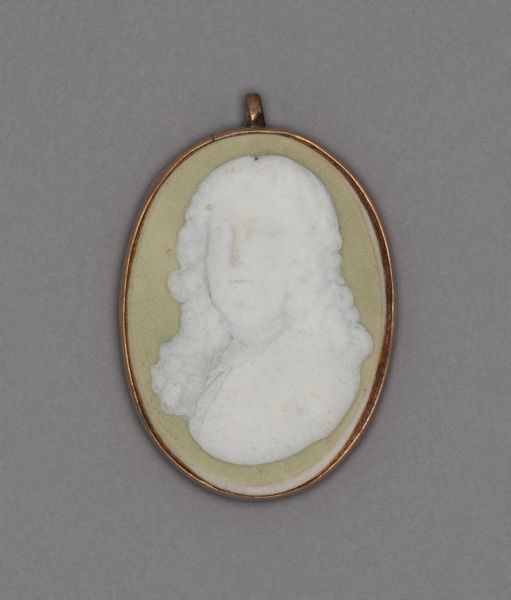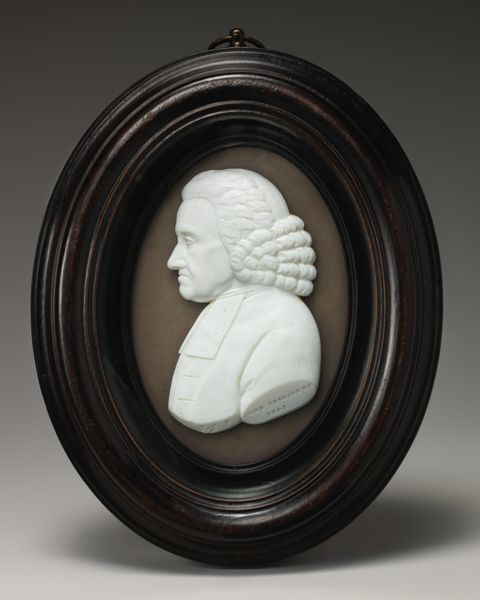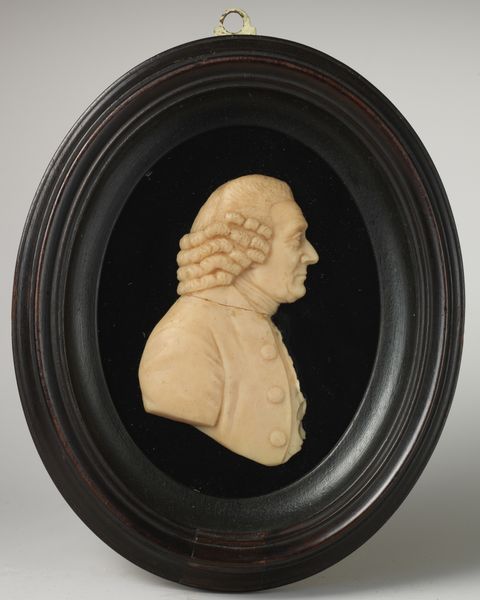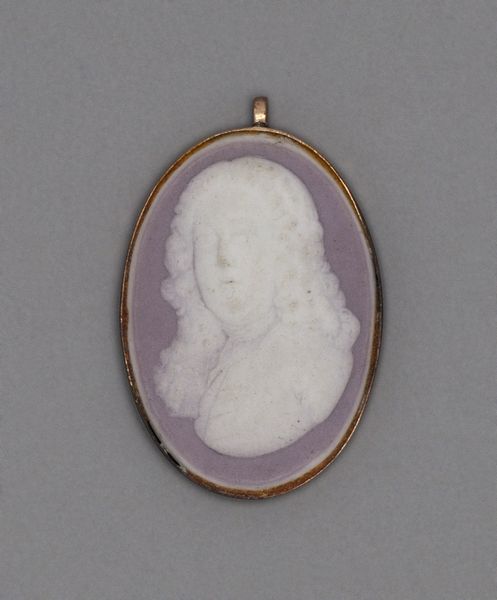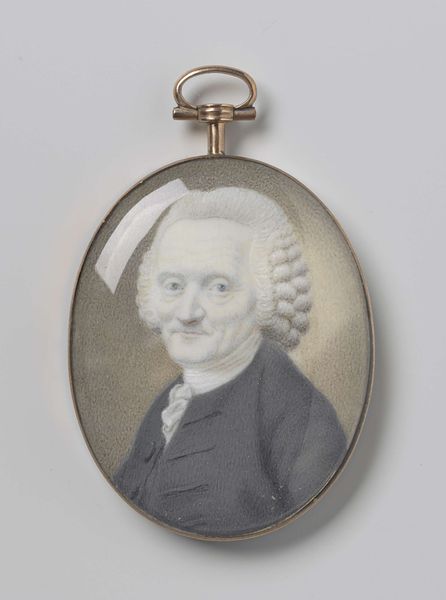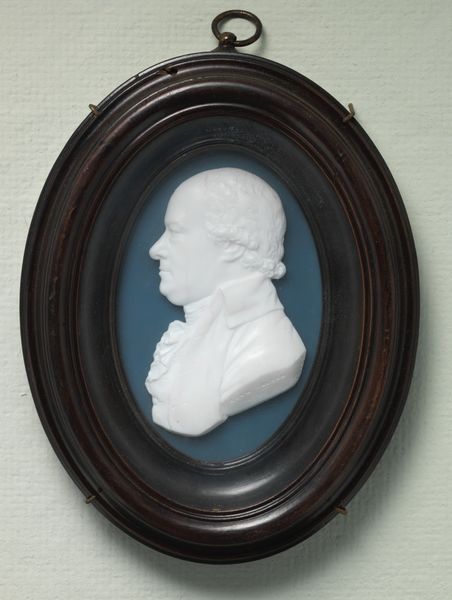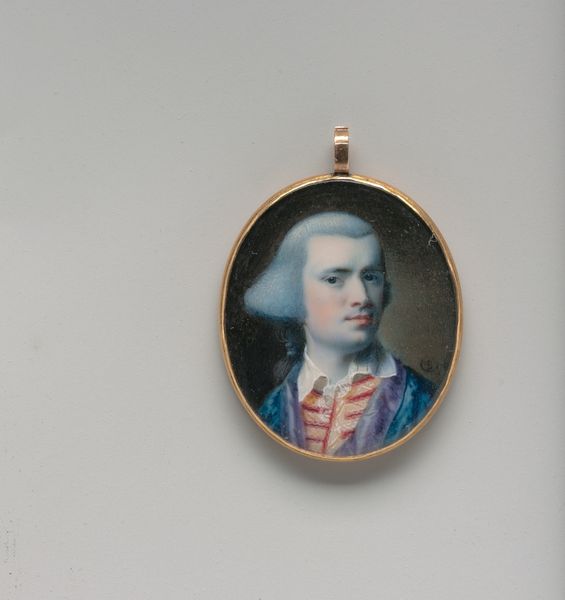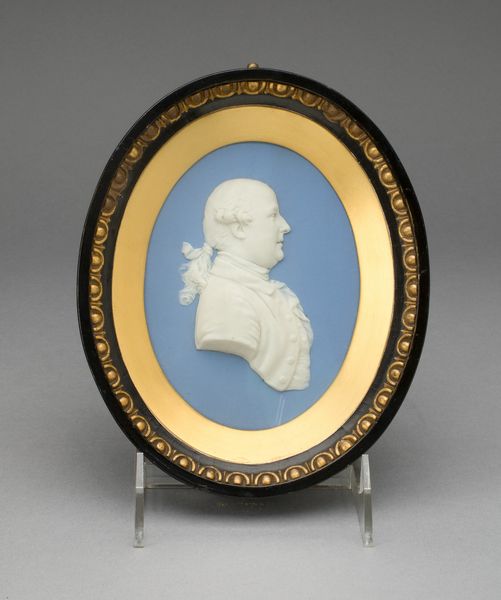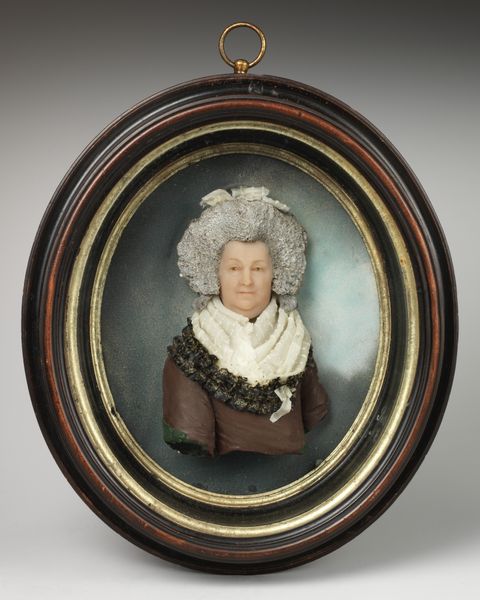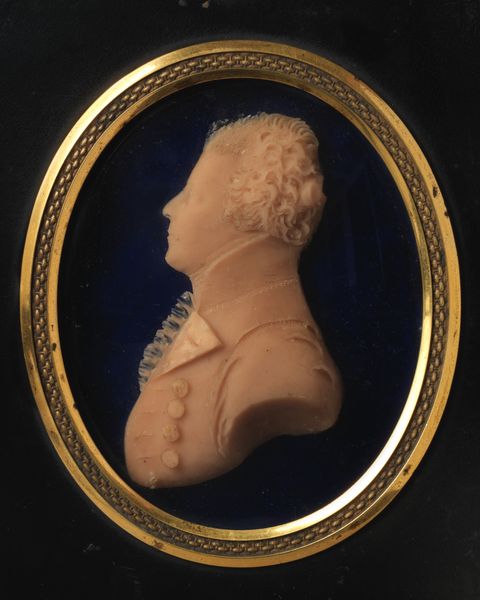
ceramic, sculpture
#
neoclacissism
#
pottery
#
ceramic
#
stoneware
#
sculpture
#
ceramic
#
men
#
decorative-art
#
profile
Dimensions: 2 1/2 × 1 7/8 in. (6.4 × 4.8 cm)
Copyright: Public Domain
Curator: We’re now standing before "Carolus Linnaeus," a ceramic stoneware sculpture created by Josiah Wedgwood between 1774 and 1784. It is currently located at the Metropolitan Museum of Art. Editor: My first impression is one of cool serenity. The pale blue background against the stark white profile lends a sense of detached observation, like a cameo frozen in time. Curator: The cameo format is interesting in itself; it speaks to a certain mode of idealization common during the Neoclassical period. Wedgwood's work, here, can be viewed as a cultural marker of Enlightenment values that emphasized reason and order. What do you make of that? Editor: Well, considering Linnaeus was a key figure in taxonomy and standardized the way we classify all living things, representing him in such a way becomes especially interesting. I think this approach could reflect a deep societal drive toward structuring and ordering the natural world but potentially overlooks other aspects. Is there commentary here, for example, on whose knowledge gets enshrined, and what that does to marginalize Indigenous or localized systems? Curator: A worthwhile point. However, focusing on Wedgwood's technique, there's something undeniably powerful about the relief carving. The delicate modeling of the wig, the precise articulation of the facial features. The artist clearly understands the capabilities of the medium, to reveal texture and shadow with minimal intrusion, to evoke classicism through geometry and proportion. Editor: Yes, I admire how Wedgwood's employment of Neoclassical visual language to give this piece a feeling of permanence, particularly given the revolutionary contexts of his time. Who gets memorialized—that's an ever-relevant question. Even with this seemingly benign portrait, we are prompted to ponder how histories are shaped. Curator: A productive exchange. We can appreciate Wedgwood’s artistic finesse whilst remembering its original social environment. Editor: Indeed, I feel I leave this portrait with renewed appreciation for its form, now laced with vital questions concerning the values it perpetuates.
Comments
No comments
Be the first to comment and join the conversation on the ultimate creative platform.
